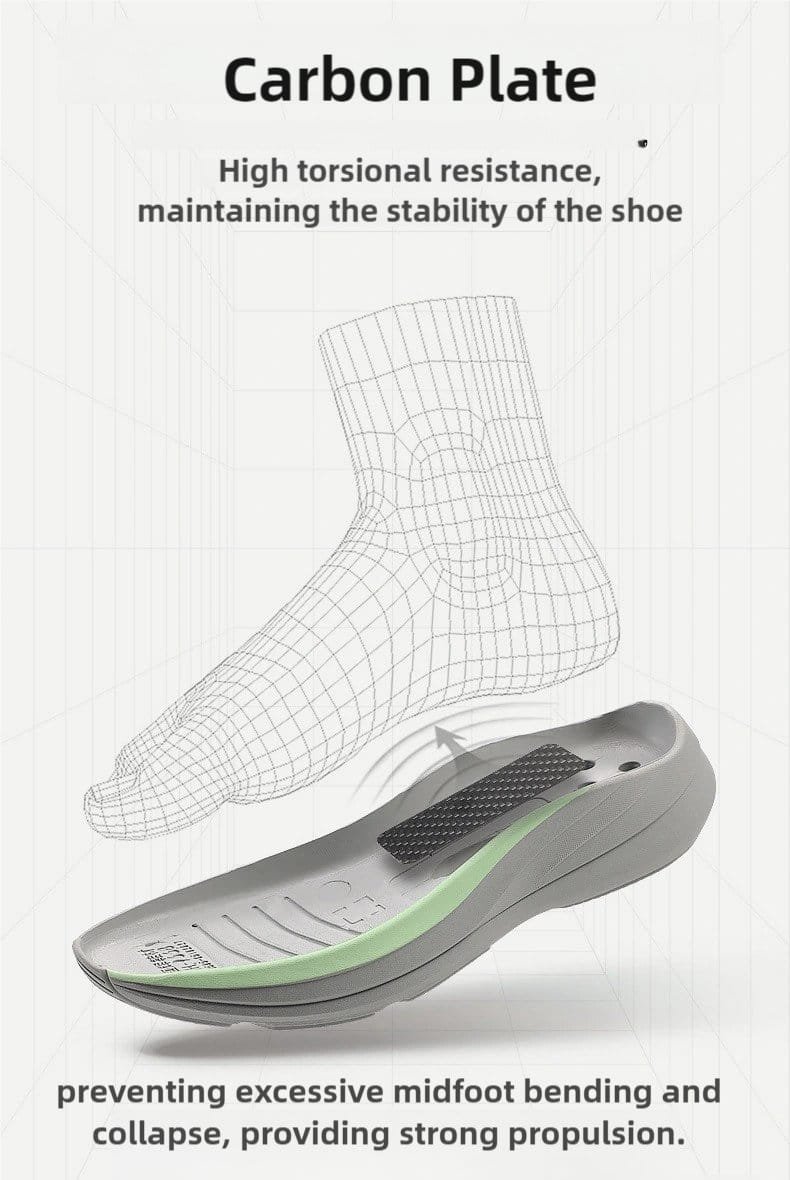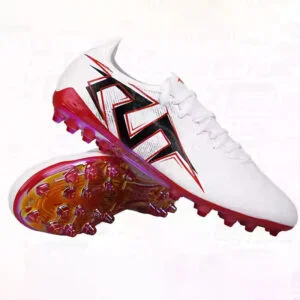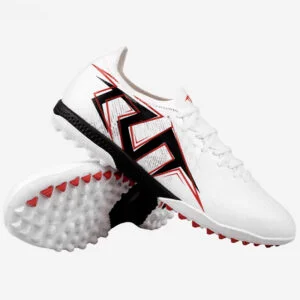In recent years, carbon plate running shoes have taken the running world by storm. Elite athletes and amateur runners alike swear by their performance benefits, including improved energy return and faster race times. But beyond speed, a growing debate centers on whether carbon fiber shoes can actually reduce running injuries.
With claims that the stiff carbon plate technology enhances efficiency and minimizes muscle fatigue, many runners wonder: Do carbon plate shoes really prevent injuries, or are they just a high-tech placebo?
How Do Carbon Plate Running Shoes Work?
Carbon plate shoes feature a rigid or semi-rigid carbon fiber plate embedded in the midsole, typically paired with lightweight, high-rebound foam (such as Nike’s ZoomX or Adidas’ Lightstrike Pro). This design aims to:
Enhance Energy Return – The plate acts like a spring, propelling the runner forward with each stride.
Reduce Calf & Achilles Strain – By stabilizing the foot’s rolling motion, the plate may decrease muscle fatigue.
Improve Running Economy – Studies show a 4% efficiency boost in runners wearing carbon-plated shoes (Hoogkamer et al., 2018).
But does this translate to fewer injuries?

The Biomechanics: Can Carbon Fiber Shoes Reduce Injury Risk?
A. Impact on Joint Loading
Research suggests that carbon plate running shoes may reduce stress on joints:
A 2021 study in Medicine & Science in Sports & Exercise found that runners in carbon-plated shoes experienced lower knee joint loads compared to traditional shoes.
The stiff plate limits excessive foot flexion, which could decrease strain on the plantar fascia and Achilles tendon.
B. Muscle Fatigue & Injury Prevention
Long-distance runners often suffer from overuse injuries due to muscle fatigue. Carbon plates may help by:
Reducing calf muscle activation (as shown in a 2020 Journal of Applied Physiology study).
Promoting a more efficient stride, which could lower the risk of stress fractures and shin splints.
However, some experts argue that reduced muscle activation could weaken tendons over time, potentially increasing injury risk in the long run.
Potential Drawbacks & Risks of Carbon Plate Shoes
Despite their benefits, carbon plate running shoes aren’t a magic solution:
A. Altered Running Mechanics
Some runners experience increased forefoot pressure, leading to metatarsal stress.
The stiff plate may reduce natural foot movement, potentially weakening foot muscles over time.
B. Not Ideal for All Runners
Heel strikers may not benefit as much as forefoot/midfoot strikers.
Beginner runners might struggle with the aggressive propulsion, increasing injury risk if form is poor.
C. High Cost & Durability Issues
Most carbon fiber shoes cost 200–200–300 and wear out faster than traditional trainers.
Expert Opinions: Should You Use Carbon Plates for Injury Prevention?
Dr. Rebecca Johnson, Sports Podiatrist:
“While carbon plates can reduce muscle fatigue, they shouldn’t be seen as an injury cure. Runners still need proper strength training and gradual adaptation.”
Coach Mark Williams, Marathon Trainer:
“For elite runners, carbon shoes offer a clear performance edge. But recreational runners should focus on form before investing in high-tech footwear.”
Dr. Alan Richardson, Biomechanics Researcher:
“The science suggests carbon plates help with efficiency, but injury prevention depends more on training load and recovery.”
Have You Tried Carbon Fiber Shoes? Share Your Experience Below!
Do you believe carbon plate technology helps prevent injuries? Or have you experienced drawbacks? Let’s discuss in the comments!
TAGS:
Carbon fiber shoes,
Carbon plate running shoes,
Carbon plate shoes





3 Comments
This was beautiful Admin. Thank you for your reflections.
Very well presented. Every quote was awesome and thanks for sharing the content. Keep sharing and keep motivating others.
Awesome! Its genuinely remarkable post, I have got much clear idea regarding from this post